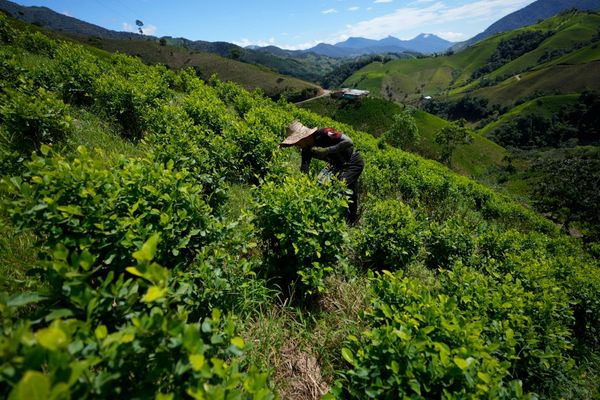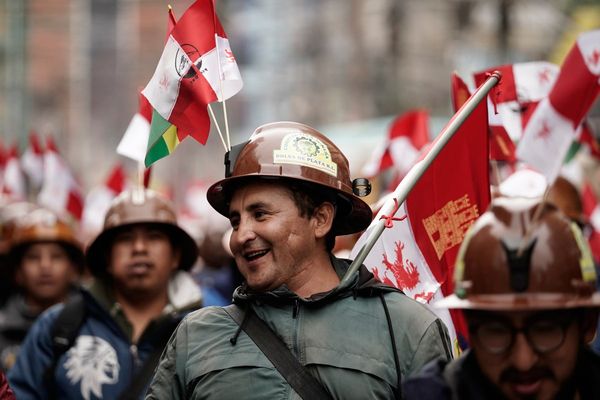
Norway goes to the polls on Monday after an unusually close-fought and polarised election dominated by the cost of living, wealth taxes, oil fund investment in Israel and relations with Donald Trump.
There has been a surge in support for the populist rightwing Progress party led by Sylvi Listhaug, in what has been described by some as “the Maga-fication” of Norwegian politics. In the event of a rightwing victory, Listhaug could become prime minister.
But according to polls, the most probable result is a narrow win for the centre-left, meaning a likely continuation of the minority Labour government led by Jonas Gahr Støre, who has been prime minister since 2021, with the former Nato secretary-general Jens Stoltenberg, one of Norway’s most popular politicians, as finance minister.
If, however, Labour does win they could face drawn out negotiations with smaller leftwing parties, particularly over oil fund investment in Israel, which has led to Stoltenberg coming under heavy scrutiny in recent weeks.
Shazia Majid, a journalist and commentator for the Norwegian newspaper VG, said this election has been “unexpectedly suspenseful” and significantly more polarised than usual.
“It’s truly been a whirlwind of an election with loads of unexpected twists and turns. Norwegians are waiting for the results with bated breath,” she said, in a “milestone election”.
The class and gender divide – which has led to many young men voting for the right – has been a “mobilising factor on both ends of the political spectrum”, she said, with accusations of lies and disinformation from party leaders.
“For leftwing parties the Gaza war has been an important theme, especially towards immigrant background Norwegians and young voters.”
The Conservative party, however, appears to have lost considerable support to the Progressive party and the Green party has unexpectedly gained more support.
Johannes Bergh, the research director and principal investigator at the Norwegian national election studies programme at the Institute for Social Research, said the top election issues have included grocery and energy prices, wealth taxes, healthcare and, unusually for Norwegian elections, which tend to be domestically focused, trade policy with the US.
A year ago, he said, it looked as if Labour would lose this election. But factors including the appointment of Stoltenberg and the perceived success of the prime minister’s meeting at the White House with Trump over trade, have turned their fortunes around.
“There is very much a feeling that they have done a good job [on US relations],” said Bergh.
But there has also been a rise of support for the right, he said. “There seems to be two duelling trends in Norwegian politics. One is a rightwing wave, especially around the young, and support for the sitting government.”
Turnout in Norwegian elections is relatively high – usually between 75% and 80% – and this election has had record early voting.
Peter Egge Langsæther, an assistant political science professor at the University of Oslo, said Stoltenberg’s return to Norwegian politics last winter has proved critical for Labour.
“In light of increasing international turbulence following the election of Donald Trump, tariffs, and various international conflicts, Stoltenberg’s return was welcomed by many and contributed to a sudden and dramatic 10 percentage point increase for Labour within a month or two,” he said.
Although campaigning kicked off with a scandal over oil fund investment in Israel, in a potential violation of its own ethical guidelines, he does not expect it to have a major impact on the election outcome.
“The most recent polls indicate a close race, with the left slightly ahead,” he added. “However, it is somewhat difficult to predict, given the large share of votes already cast and the fluctuating polls throughout the campaign. If the left wins, the most likely outcome is a continuation of the minority Labour government with parliamentary support from several smaller leftwing parties.”
A result is expected late in the evening on Monday night. There is also the added uncertainty of widely predicted tactical voting.
Henning Finseraas, a sociology and politics professor at the Norwegian University of Science and Technology, said: “Both blocs have parties that poll close to the threshold of 4% (the Green party on the left, and the Christian People’s party and the Liberal party on the right), which means that the outcome of the election will depend on which of these parties beats the threshold. This situation has triggered tactical voting, adding to the uncertainty.”







